Measurement & marking out
Vernier
Checking the accuracy of the vernier calliper
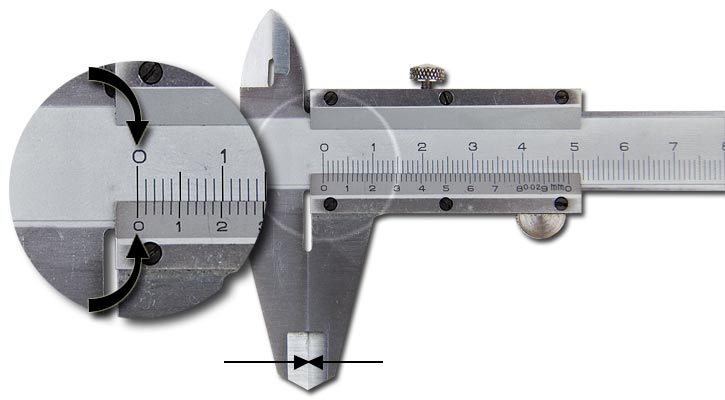
Checking vernier accuracy
Before using a vernier calliper note that when the jaws are closed, the main scale zero marks lines up exactly with the vernier zero mark.
How to use the vernier calliper
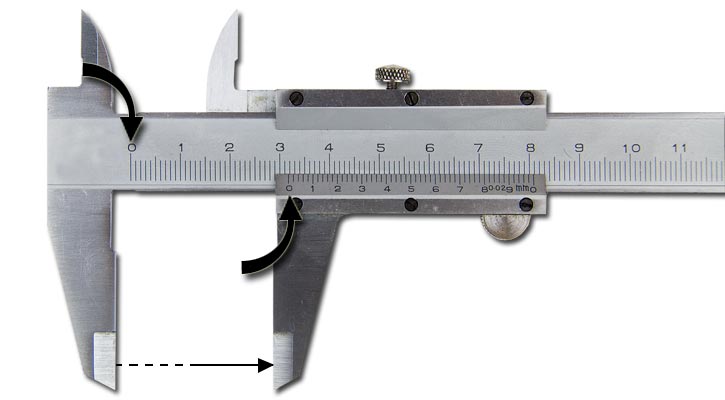
Opening the verniers
As the jaws are opened, the vernier zero moves away from the main zero. The size of the measurement is the distance between the two zero marks, as shown in the photo above.
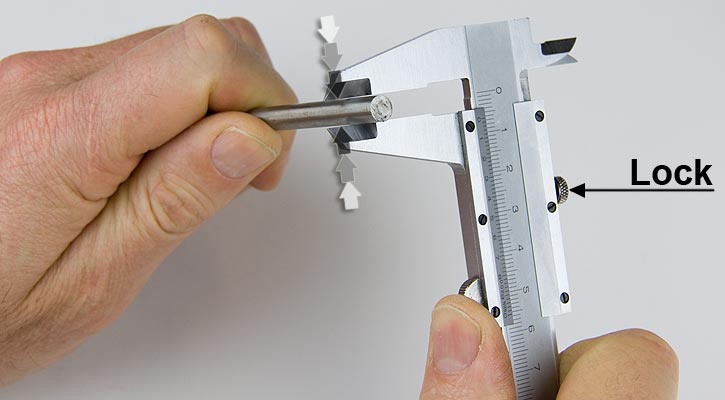
Closing the vernier jaws
Accurate measuring with a vernier calliper takes practice. It is important to get the right 'feel' when you measure something. The jaws should not be too tight or too loose – sometimes it helps to gently 'rock' the jaws as you adjust them.
Lock the jaws after taking a measurement, so that the setting doesn’t change accidentally. Then double check the setting.
Reading whole millimetres
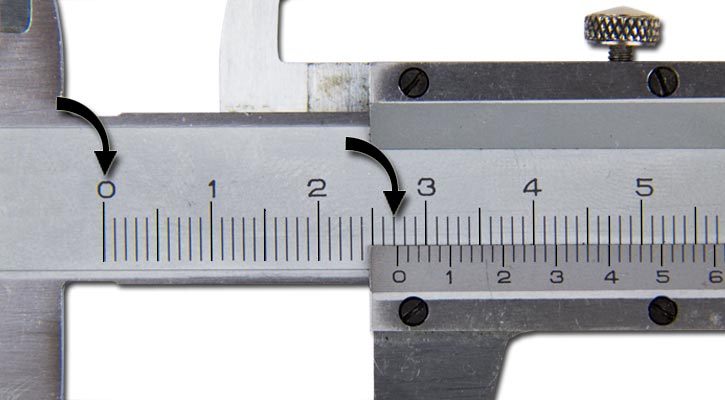
Reading whole millimetres
The first step in reading the vernier calliper is to note the number of whole millimetres between the two zero marks. In the example above, the jaws are open just a little bit more than 27 millimetres. The number of whole millimetres shown is 27.
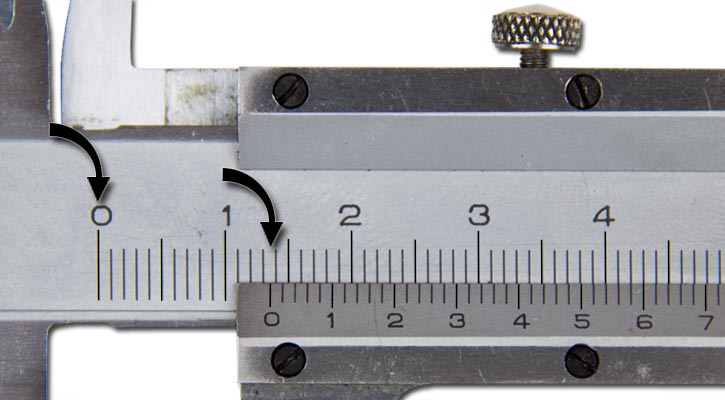
A whole millimetre reading of 13
In the above photo, the opening is between 13 and 14mm. The number of whole millimetres shown is 13.
Reading fractions of a millimetre
After reading the whole millimetre scale, the next step in reading a vernier calliper is to work out the measurement to the nearest 0.02 of a millimetre (0.02mm).
Remember that the vernier scale:
- is numbered from 0 to 10
- has 50 divisions
- each division represents 0.02mm.
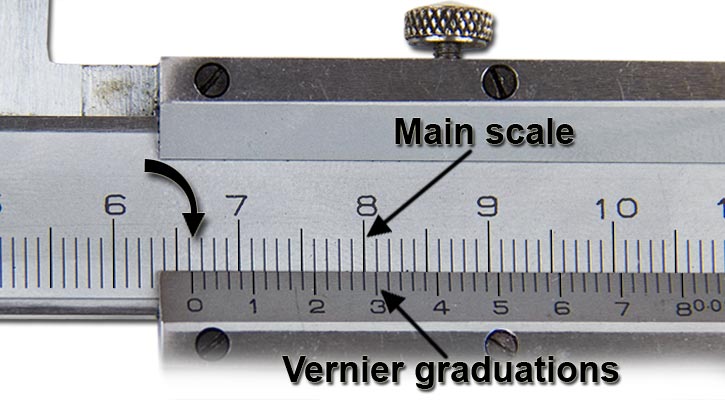
Reading fractions of a millimetre
Look at this example: the calliper opening is between 66 and 67 millimetres – the measurement is '66 point something'. You must be able to find out what that 'point something' is, so that you can add it to the 66 whole millimetres.
Lining up the graduations
Look very carefully along the graduations on the vernier scale until you find a vernier graduation which lines up exactly with a main scale graduation.
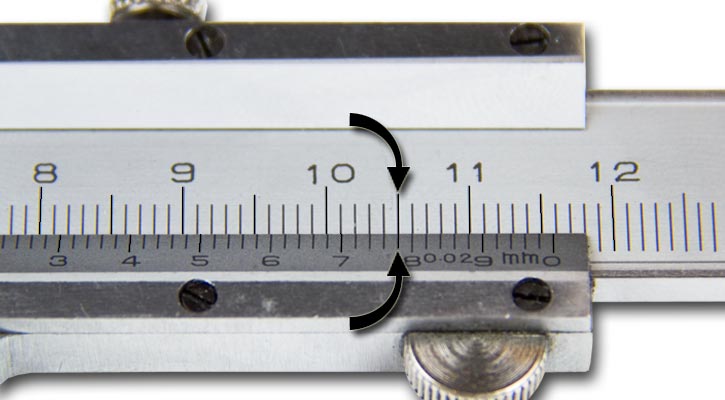
Lining up graduations
The photo shows graduation alignment. This lined-up vernier graduation will tell you what fraction of a millimetre to add to the whole millimetre reading.
Value of the vernier reading
To find the value of the lined-up vernier graduation, just imagine that the vernier scale reads from 0 to 100, counting by twos. This allows you to read the exact measurement as a decimal fraction, straight off the scale.
In the example above, the number of the lined-up graduation is 78. You should read this as point 78 – that is, the vernier reading is 0.78mm.
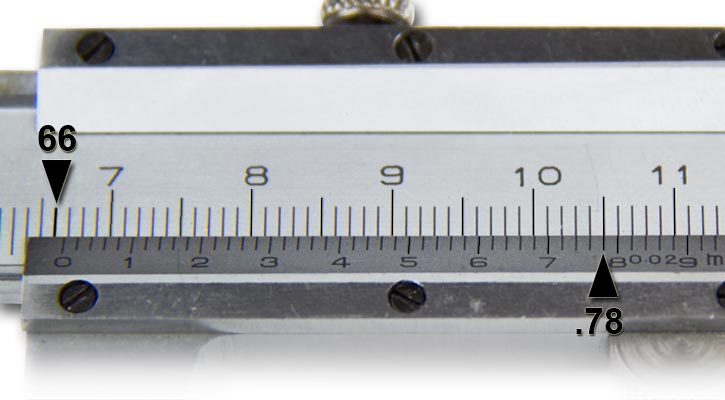
A measurement of 66.78mm
The total measurement is: 66mm plus 0.78mm or 66 + 0.78 = 66.78mm. The final measurement is 66.78mm
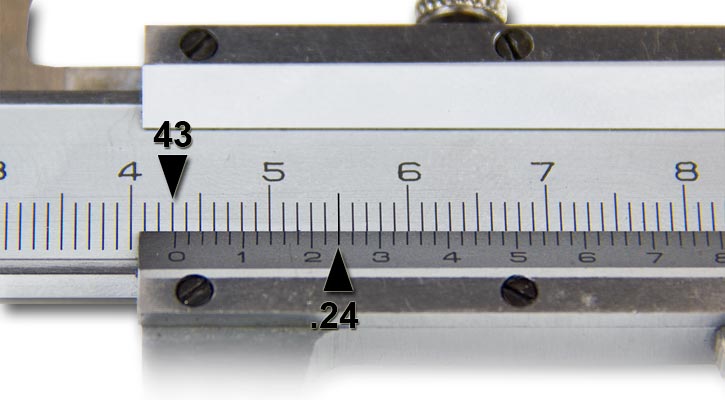
A measurement of 43.24mm
In the example above the whole millimetre reading on the main scale is 43mm. The 'lined-up' vernier graduation indicates 0.24mm. So the total reading is: 43 + 0.24 = 43.24mm.



